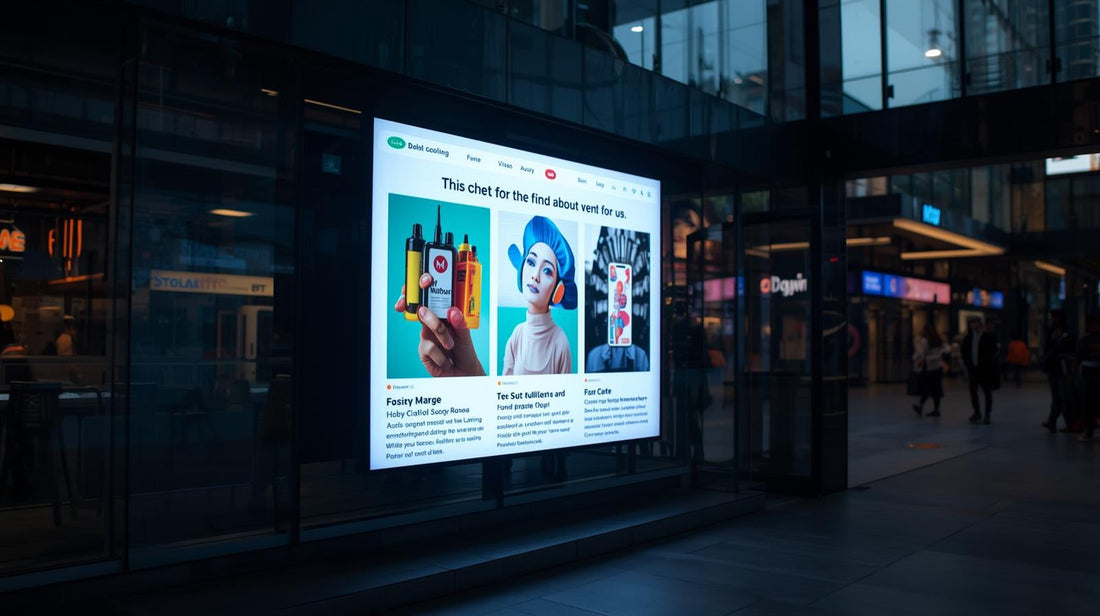The landscape of outdoor marketing is evolving faster than ever. Traditional static billboards still have their place, but LED advertising screen now bring a new level of flexibility, engagement, and performance. For businesses aiming to capture attention in crowded urban environments, these displays offer opportunities that older formats simply can’t match.
In the UK, LED screens are rising in e.g. transport hubs, shopping districts, and event venues delivering moving visuals, real-time content, and dynamic messaging. For any brand looking to make a mark, understanding this transformation is crucial.
Why LED Screens Matter More Than Ever
LED advertising screens are more than flashy visuals — they solve real challenges:
- Even in bright daylight, high-brightness LED displays maintain clarity and visibility. Many modern outdoor screens offer sunlight-readable panels.
- They allow instant content updates. A brand can change messaging for morning offers, event promos in afternoon, and night specials all without manual reprinting.
- Durability: these screens are built for outdoors with weatherproofing, vandal resistance, and rugged enclosures.
- Better audience engagement: video, animations, transitions draw more attention than static posters, reducing “blind spots” in consumer perception.
The Transformation Path: From Static to Dynamic
Replacing Traditional Billboards with LED Out-of-Home
Traditional billboards remain in use, but many brands now layer or replace them with digital outdoor marketing especially in high footfall zones like shopping streets or public squares. LED signage providers in the UK offer custom solutions for street-level displays, rooftop screens, and even modular LED facades.
Hybrid Campaigns Static + LED Mesh
Smart marketers combine static and LED formats: the static billboard ensures presence, while LED screens run time-sensitive offers, video, countdowns, or interactive elements.
Event & Tactical Deployments
At festivals, live concerts or sporting events, mobile van advertising or temporary LED structures let brands drive real-time displays, live feeds, or synchronized broadcasts. These tactical uses further push the role of LED in modern outdoor campaigns.
Key Advantages of LED Advertising Screens
Here are some of the standout benefits that make LED display screens a compelling choice:
- Dynamic storytelling: Video sequences, transitions, slideshows your campaign tells a richer story.
- Real-time relevance: Adjust messaging immediately for weather, footfall, or unexpected trends.
- Higher recall: Moving, luminous content sticks more in viewers’ memory than static images.
- Better ROI over time: Though initial cost is higher, the flexibility and multi-use nature reduce recurring print costs.
- Better targeting & scheduling: You can show different ads by daypart or segment traffic zones.
Challenges & Things to Watch
To deploy LED screens successfully, brands must consider:
- High CAPEX / setup cost: LED hardware, installation, cabling, and digital control systems are expensive.
- Energy / power consumption: Running bright LED displays consumes substantial power choose efficient models.
- Content planning: Poorly designed or cluttered visuals lose impact.
- Permits & regulations: Local councils often require permissions for outdoor LED installations.
- Visibility & sightlines: Screen placement must avoid obstructions, glare, and ensure safe viewing from routes.
Best Practices for LED Screen Campaigns
- Use high contrast, minimal text, bold visuals people see these while moving.
- Schedule creative rotation avoid ad fatigue by changing content periodically.
- Add interactive elements: QR codes, short URLs, social tags.
- Use analytics to monitor which screens or messages perform better and iterate.
- Position displays along routes your target audience travels not just high traffic but relevant traffic.
Conclusion:
LED advertising screens are transforming outdoor marketing in the UK by bringing motion, adaptability, and audience engagement into the real world. For brands ready to invest, here’s what to do:
- Audit your current outdoor presence and identify high-potential LED zones.
- Start with a pilot on one or two screens to learn content performance and audience response.
- Ensure your creative team understands motion design and readability under real conditions.
- Combine LED displays with static assets and digital campaigns to amplify reach.
- Monitor performance, collect insights, and scale gradually.
LED screens won’t replace static ads entirely but they’re becoming a central, high-impact component in a modern outdoor strategy.
FAQs
1: Are LED advertising screens worth the investment for small businesses?
Yes, if deployed strategically in high-visibility zones with rotating content. Their flexibility and replay value often deliver better long-term return than repeated print costs.
2: How much does an outdoor LED screen cost in the UK?
Costs vary based on size, brightness, installation complexity, and content control systems. Small outdoor screens start in the low thousands of pounds; large-scale facades or moving LED vans cost much more.
3: Can LED advertising screens be used at events and mobile contexts?
Absolutely. Brands often use mobile LED trucks or temporary LED mounts at festivals, exhibitions, concerts, and roadshows to deliver dynamic content in real-world settings.

